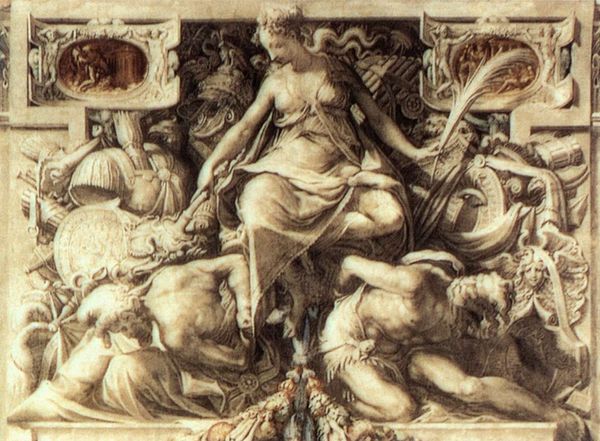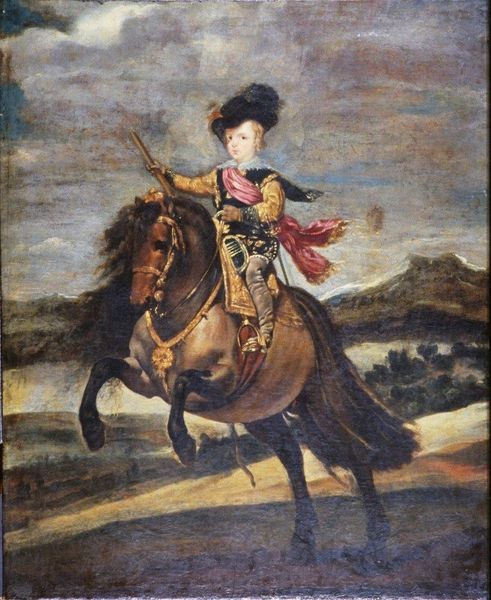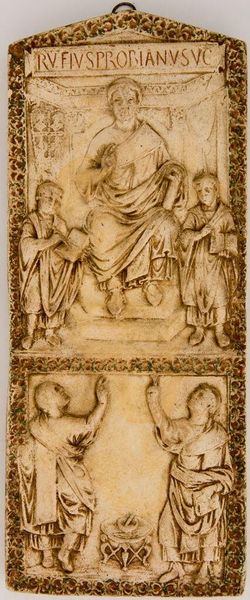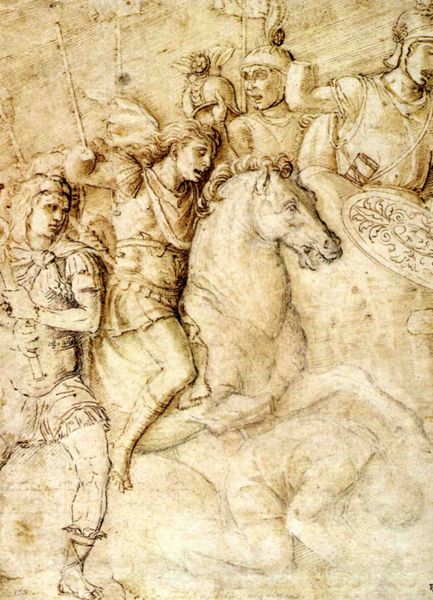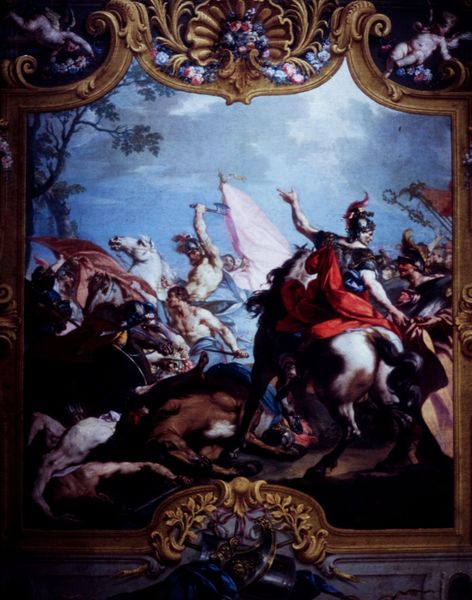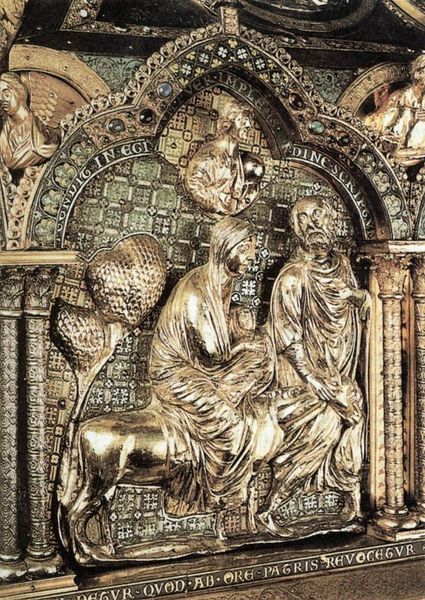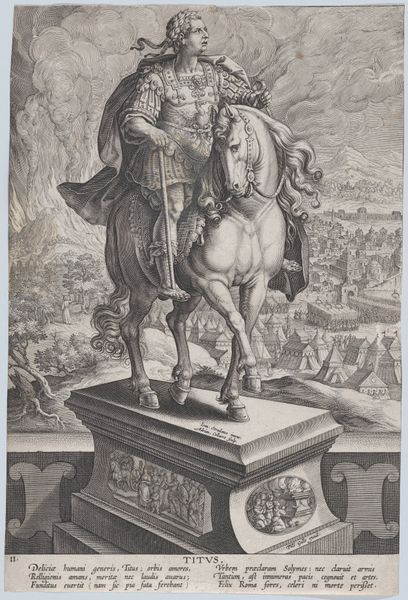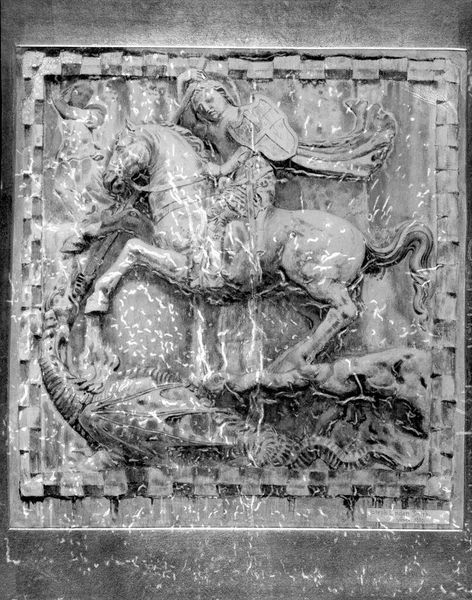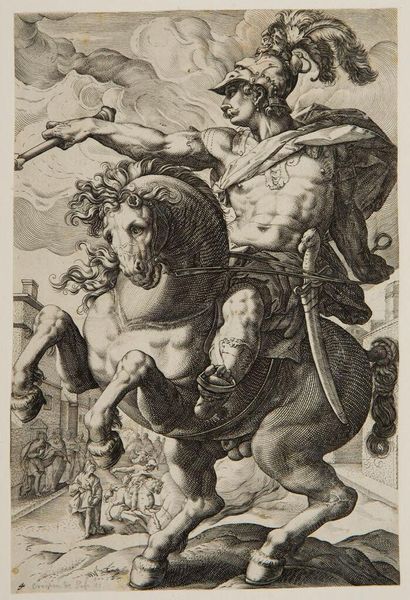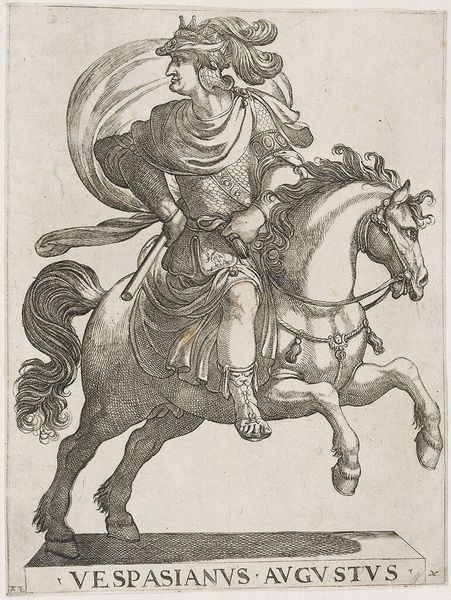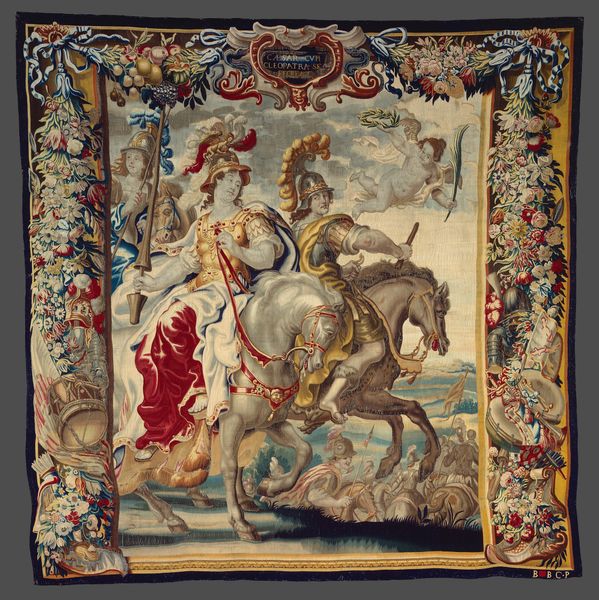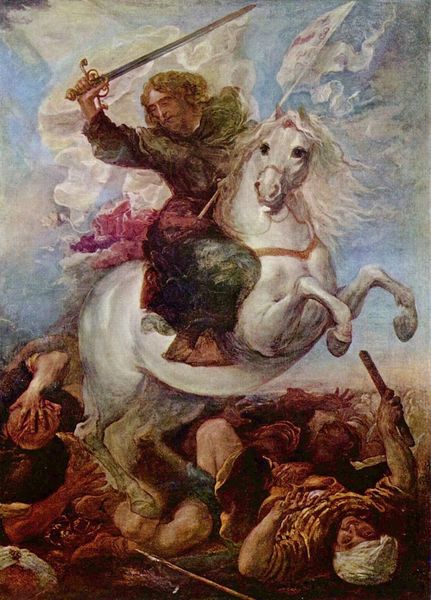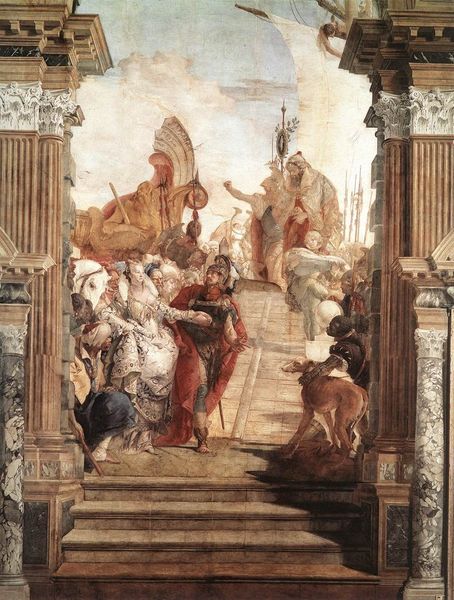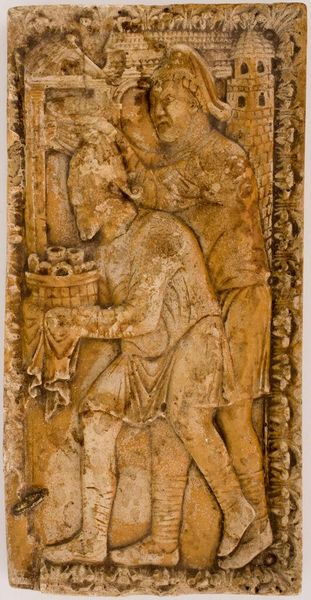
Equestrian monument to Niccolo da Tolentino 1456
andreadelcastagno
Duomo di Firenze (Cattedrale di Santa Maria del Fiore), Florence, Italy
fresco, sculpture
portrait
statue
high-renaissance
stone
sculpture
sculptural image
fresco
sculpture
horse
men
history-painting
italian-renaissance
statue
Copyright: Public domain
Curator: What immediately strikes me is the sense of frozen power in Andrea del Castagno's "Equestrian monument to Niccolo da Tolentino," created around 1456. It’s a fresco meant to mimic sculpture, giving the impression of a stoic commander eternally vigilant. Editor: I see that too, though I’m more drawn to the idealized image of Niccolo—an attempt to forge a cultural memory. The horse and rider, rendered in shades of white against a dark background, project authority and nobility, speaking to the sociopolitical motivations behind the work. Curator: Absolutely. And that’s precisely what I find fascinating. Tolentino was a condottiero, a mercenary leader, and this monument in the Duomo di Firenze functions almost like a secular icon. His raised baton, the controlled posture, it all symbolizes strength. This fresco doesn’t just portray him, it *constructs* a narrative of leadership. It’s less about likeness, and more about crafting a legend. Editor: It also seems designed to send a message, perhaps aimed at solidifying the state's power. I am especially intrigued by its placement within the Duomo. Public art like this became vital, didn't it, in shaping communal values and perceptions, especially regarding those in power and the narratives they wished to promote? The use of painted sculpture to imitate a real one surely emphasized its monumental importance to the viewers. Curator: Indeed. Castagno used the language of sculpture to grant it a sense of permanence and unwavering conviction. Look closely, and you notice the sculptural conventions of the Renaissance are married with a very pronounced, personal style, which makes this figure a captivating combination of power and localized emotion. It draws from the language of classical heroes while grounding it within Florentine culture. Editor: A complex work, really. On one level, a clear political statement about authority and power. Yet, the way Castagno plays with representation and symbolism opens the door to thinking about how art itself participates in mythmaking, turning individuals into enduring figures of cultural imagination. Curator: Precisely. An effective illustration of art’s impact. Thank you for the stimulating chat! Editor: Thank you as well! This piece gives me a fresh point of view.
Comments
No comments
Be the first to comment and join the conversation on the ultimate creative platform.
